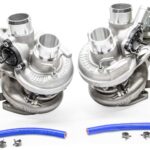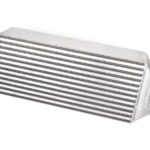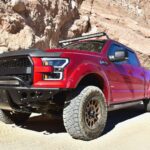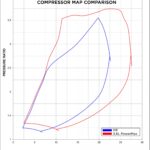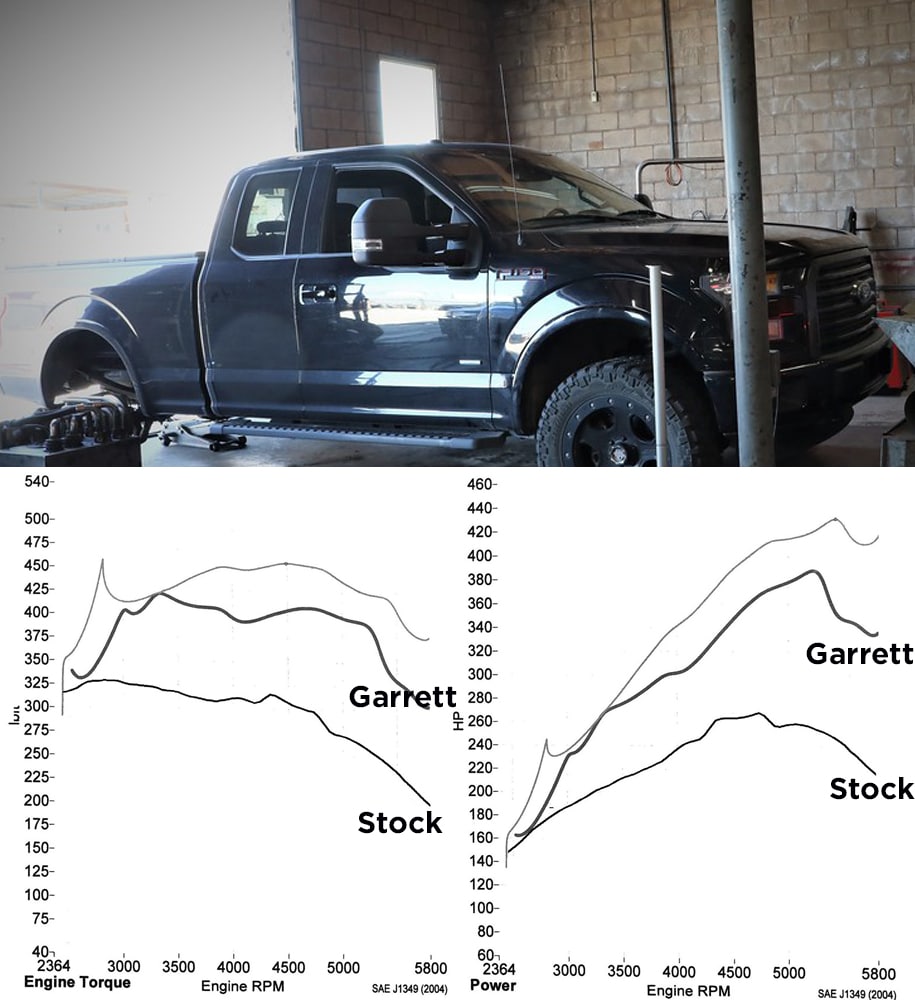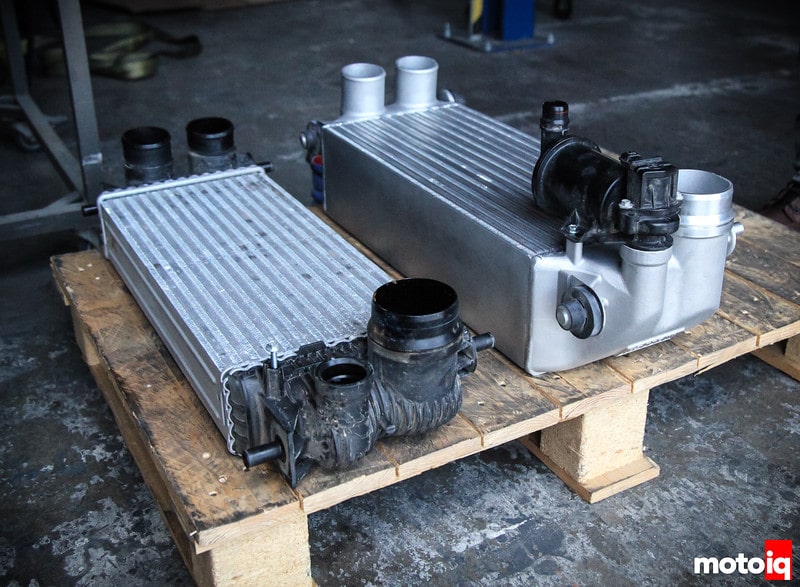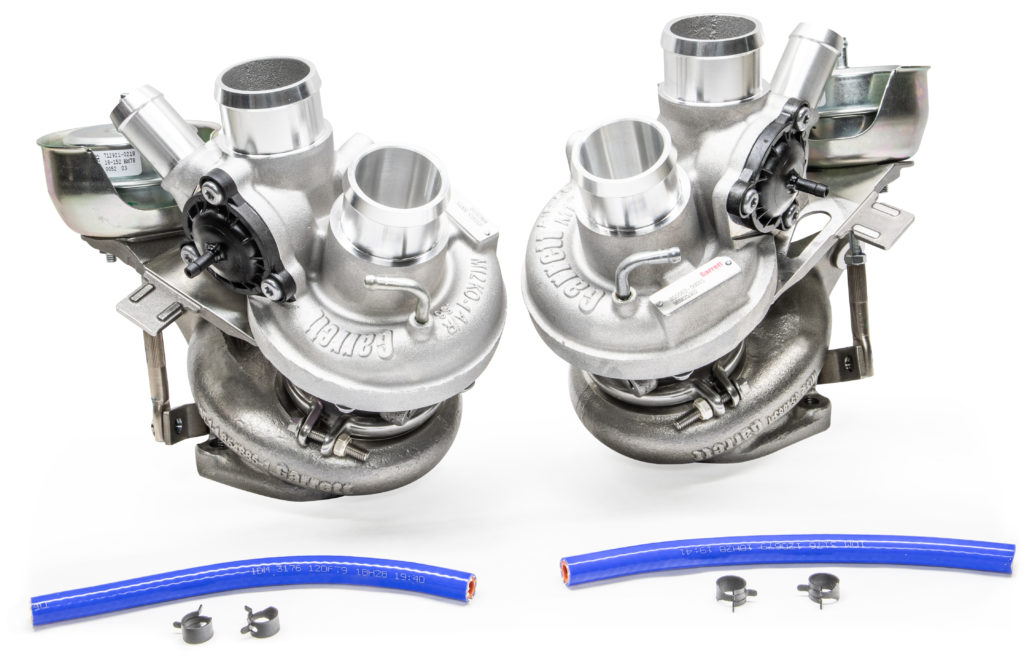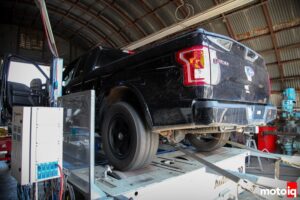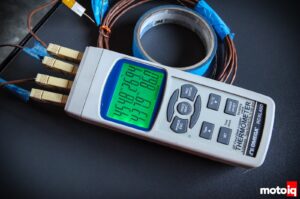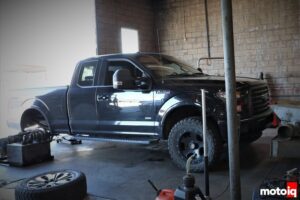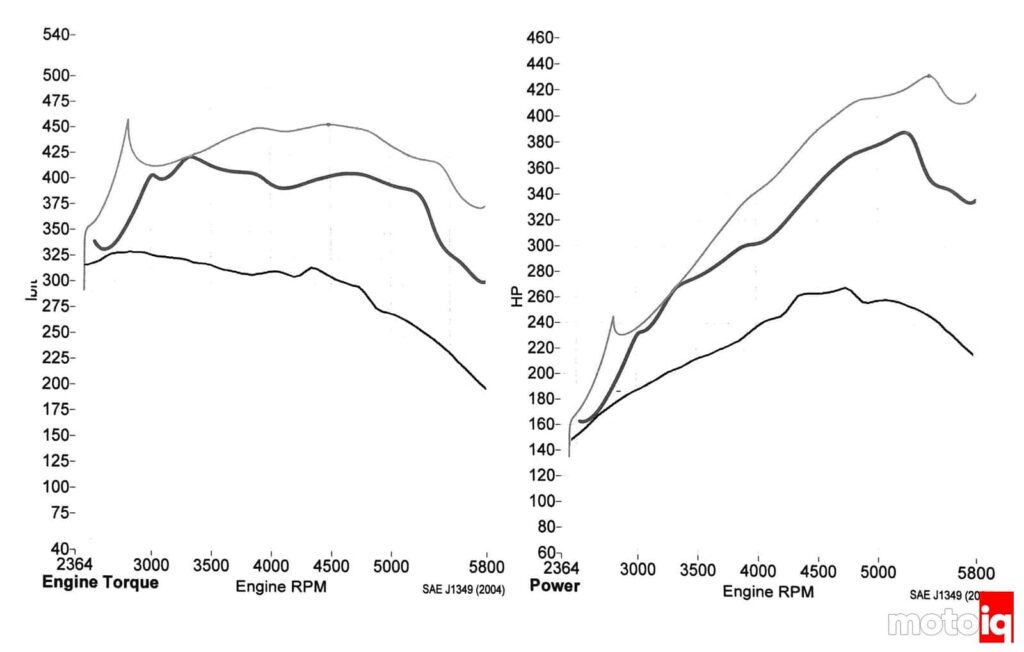Making Power With The PowerMax Twin Turbo and Intercooler Upgrade For 3.5L F-150
PowerMax Performance For Your Ford F-150
If you are looking for a little extra power for your ecoboost engine, Garrett PowerMax turbos and intercoolers are a great place to look. The PowerMax products are engineered for specific engine and vehicle applications to increase power over OEM while maintaining the OEM fit. Yes, these are direct drop-in products that can be installed at professional garages or by experienced DIYers. One thing to note is that the performance results of the product are highly dependent on vehicle modifications and tuning/calibration. The kit is not approved for street use and this can affect your vehicles safety, warranty, and operating license so please check with your local vehicle manufacturer and turbo kit distributor when considering a purchase.
ECU Flash Vs Turbo Upgrade
Stock turbos are engineered and selected to operate efficiently at the stock conditions. In order to make more power with the factory turbos you need to increase boost pressure by spinning them faster. When a turbo increases its RPM it becomes less efficient. Poor efficiency increases air temperature exiting the turbo and will quickly heat soak the intercooler. When the intercooler becomes hot, that heat is transferred through the radiator which heats up the coolant, then into the engine compartment increasing the heat all over.
There are a lot of companies that offer an ECU tune or flash for the stock F-150 computer. While these do show an increase in engine performance, the negative consequences of heat mentioned above will start to set in. When water temps reach a certain point the ECU will start to derate the engine, cutting power until temperatures stabilize. The cycle will continue on and on when you have a poor efficiency setup.
Turbocharger upgrades increase the size of the compressor wheel to flow more air at the stock RPM and boost pressures. This keeps the turbocharger in an efficient range, keeping air temps low while making more power continuously. Garrett has engineered an intercooler and twin turbo upgrade specifically for the 3.5L Ford EcoBoost engine platform.
- PowerMax Turbo Upgrade for 2011-2016 F-150
- 2015+ F150 and Raptor 3.5L
- F-150 Intercooler installs behind many aftermarket bumpers
- Compressor map comparison of OEM and PowerMax
The paragraphs below contain excerpts from an article written in partnership with MotoIQ. For the full article click here
To find a distributor click HERE
The stock Ford F-150 intercooler and turbos are decent at their intended boost levels, but when tuning the stock ECU and turning up the wick is when their shortcomings becoming grossly apparent. Enter Garrett Advancing Motion with their bolt-on Powermax turbo and intercooler upgrades for the Ford F-150 EcoBoost. The compressor side of the stock turbos on the F-150 are not very efficient at higher boost levels. Couple that with the “just good enough” stock intercooler and you have a less than optimal situation for power increases. At higher boost levels charge temps climb fast and really high! During our independent testing of some off-the-shelf tunes that turn up the boost we found intercooler inlet temps nearing almost 500 degrees of oven baking heat after just a few pulls!
Under these conditions, an upgraded intercooler really works well and is badly needed. Not only are these kinds of temps not good for power, but they’re also not good for long term reliability. Our Project F-150 EcoBoost is a working truck, as the owner lives in a relatively remote area of Arizona. So reliability is a top priority, right alongside performance. Wanting more power without sacrificing reliability, we were all eager to test Garrett Advancing Motion‘s new Powermax twin-turbo and intercooler upgrades for the F-150 EcoBoost.
C.A.R.B Certified (EO #D-794) Intercooler Upgrade For The 2015+ 3.5L and 2.7L Ford F-150 (Part Number 870702-6001) MSRP $1,044.00
Garrett’s FMIC intercooler upgrade for the Ford F-150 EcoBoost is notable in its quality, attention to detail and OEM like fit and finish.
Garrett’s F-150 front mount intercooler is designed to be a total plug and play part that is compatible with the stock vehicle using all of the factory components. The idea is for a clean installation that is easy to do. The heart of the Garrett intercooler is its large bar and plate core. The new core is much larger and thicker than stock with way more thermal mass and frontal area. With more internal area, there is less pressure drop across the core due to flow restriction as well as a large drop in temperature.
The Garrett intercooler has machined bibs to accept the OEM Ford intercooler outlet elbow which is a complicated piece that needs a specially shaped bib to it to snap in place and be retained properly. The Garrett intercooler also has provisions for the OEM compressor bypass valve which is attached to the stock intercooler with another dedicated OEM bib shape. The stock compressor bypass valve actually works really well and has a high flow rate so it is good to retain it instead of going to an aftermarket part.
Comparing the stock intercooler to the Garrett side by side you can clearly see the massive difference in size between the two. You can also appreciate the smoother design of the end-tanks which will surely help improve flow. The thickness difference of the cores is obviously different too! Look at how thick the Garrett core is compared to the stock part.
Twin Turbos With Internally Wastegated Turbine Housings – 2011 – 2017 3.5L Engine Platforms (F-150 | Expedition | Navigator) MSRP $2571.00
The turbo package uses Garrett’s reverse rotation wheels to make a unit that fits as well as the OEM parts. The turbos use a conventional high-quality dynamic bearing center section much like the OEM turbos.
The new Garrett turbos have an internal wastegate like the OEM turbos, but introduce the exhaust flow into the exhaust system in a more efficient less restrictive way. Good wastegate flow can really improve both power and response in an internally wastegated turbo.
The CFD optimized compressor and turbine wheels of the Garrett turbos are larger, lighter and are more efficient, especially at higher than stock boost pressures. The compressor wheel is machined from a forged billet for improved strength which allows for thinner blades for more aerodynamic efficiency. The compressor and turbine housings are also optimized to the wheels. The turbos flow 22% more than stock and can support close to 300 hp per turbo.
The compressor has a .56 A/R housing with a 62 trim wheel. The turbine side has a small .45 A/R housing with a largish 80 trim turbine wheel. This is pretty unusual and is pretty close to axial flow for the turbine. Perhaps this is some of Garrett’s latest technology!
How Testing Was Performed
To start our evaluation of the Garrett intercooler we needed to first get some baseline temperature data from the stock intercooler. We collect this data by inserting thermocouples in the inlet and outlet sides of the intercooler. We start this process by loosening the couplers which are very easy to access from under the car. We then slid thermocouples under the couplers and into the charge airstream. We placed thermocouples on each of the two inlet sides and one on the outlet side to measure the temperatures going into and out of the intercooler. Here are the couplers with the thermocouples in place and ready for testing. Our test protocol is to run the vehicle on the dyno doing consecutive pulls as quickly as possible until the inlet and outlet temperatures are stabilized and the system is heat saturated.
We used our in-house SuperFlow AutoDyn 30 for both our inlet/outlet temperature data and for baseline horsepower numbers. Here is our Project Ford F-150 EcoBoost on our dyno doing one of many consecutive pulls. The data we collected included inlet temperatures, outlet temperatures, ambient air temperatures and baseline power numbers (horsepower and torque).
We also monitor the vehicle’s coolant temps, intake air temps, air-fuel ratio and long/short-term fuel trims using our AEM Electronics CD-5 dash, which also works as a data logger. This is to make sure that we are running the engine within safe parameters and to help with consistency when we do back-to-back comparisons. This is pretty important in late-model cars whose ECU’s can actively make impactful changes.
- Our baseline temperature data yielded an average inlet temperature of 245F degrees an average outlet temperature of 175F degrees. Stock baseline power numbers were 258 horsepower and 338 foot-pounds of torque.
Testing A Bad ECU Tune
Before we started bolting on the aftermarket Garrett goodies, we wanted to test a couple more things while the car was still in stock form. Like we mentioned earlier, the factory turbos and intercooler work well for what they were designed for, but we were wondering what exactly happens when one of the many off the shelf tunes available for the Ecoboost engine is used. After loading a new tune to our project it was time to spin the roller again. With the turbo compressors way out of their efficiency range, due to the tune’s higher than stock boost pressure, the charge temps coming out of the turbos were about 450F degrees! After the intercooler, the temps were still a frying 270F degrees! That’s a difference of over two hundred degrees in inlet temp and almost one hundred degrees in outlet temps. This is seriously not good for your engine! This was still pretty darn hot and we don’t feel it is safe to run your F-150 EcoBoost on just a tune. Yes, it will make more horsepower, but those inlet and outlet temperatures are unacceptable and will not yield good results in the long run.
Testing the PowerMax Performance Turbos and Intercooler Upgrade
We ran the truck with the Garrett intercooler using the same protocol as our original test. We also uploaded the OEM tune and put the license plate back on. The difference in charge air temps was impressive! Once the system heat soaked and stabilized our median charge air temps were now 118 degrees, a 57-degree improvement over stock!
The Garrett intercooler upgrade for the Ford EcoBoost F-150 makes a huge difference in air charge temps, is easy to install and fits perfectly. If you have stock turbos with a tune that increases boost the use of an upgraded intercooler is extremely important due to the high charge temperatures that the stock turbos make with higher than stock boost.
The new turbos flow drastically better than stock and have a greatly different boost curve. For safety, we had our truck’s ECU re-calibrated at Church Automotive Testing. Shawn Church started to tune our car using the HP Tuners tuning suite. HP Tuners allows full tuning of the cars many parameters. Modern ECU’s are quite difficult to tune and are beyond the scope of most people even with aids like HP Tuners. Our goal was not to tune the car for the maximum power, but to keep close to stock boost levels with safe air-fuel ratios and ignition advance to show what the turbos alone could do.
It became apparent during the first pull that some serious tuning was going to be needed as the truck went into a power limiting mode right away. Several torque-limiting tables needed to be manipulated so the car would even run properly. You pretty much need experience and know exactly where to make changes. The possibilities to edit this function and the number of editing possibilities was pretty mind-blowing! It would be really hard to know which torque tables were needed for safe operation and which needed to be changed so consult a professional.
We wanted to keep near-stock boost levels but to take advantage of the Garrett Turbos fast spooling and free-flowing wheels with much greater efficiency. The process was pretty long and complicated. When you pay to tune late model cars, you really get your money’s worth. You also need to beware of hacks on these cars as the level of knowledge needed is quite high.
Performance Results
Stock configuration numbers without the intercooler and turbos on our SuperFlow dyno (bottom line),
Stock boost levels with the Garrett intercooler and turbos without all the power limiting magic of the stock ECU (middle line)
Garrett parts and Church’s custom tune (top line)
Power with only removing the torque limiting parameters of the stock ECU at stock boost levels is largely due to the cooler intake air temps and a reduction in backpressure. If you recall, with the superior Garrett intercooler we saw charge air temps that were cooler than stock. This sort of reduction is power that may actually be easier on the engine!
With our light tune, our truck put out a whopping 431 whp and 454 lb/ft of torque! A huge 173 whp and 116 lb/ft improvement over stock. Shawn said that with some minor changes like high flow downpipes and a more power-oriented tune we could expect up to 500 whp on pump gas!
When driving the truck, it was transformed with tons of newfound power and torque. Even though the Garrett turbos are larger, there was no perceptible increase in turbo lag. The response to transient throttle movement was still as good as stock as well! This is probably due to the greater efficiency of Garrett’s aero and better matching to the engine’s performance requirements.
In conclusion, the combo of the Garrett intercooler and turbos is an all-around win win and highly recommend. If you have an Ecoboost truck, these items are must gets!







